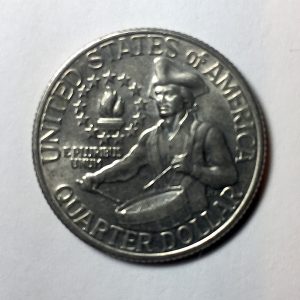VOTE!
Voting is so important to how this country operates that the U.S. Constitution was amended four times to ensure every vote is represented. In addition to the Civil Rights Act, Congress passed six significant voting acts to protect everyone’s vote by making voting accessible to the handicapped and elderly to empowering military and other overseas workers.
The bottom line is that it is your right and duty to vote.
If you did not vote early or by absentee/mail-in ballot, go to your polling location and vote.
Do not let anyone stop you or intimidate you. VOTE!
Week of the World’s Fair of Money
The American Numismatic Association World’s Fair of Money begins tomorrow, August 13 at the Donald E. Stephens Convention Center in Rosemont, Illinois. Rosemont is a suburb of Chicago and not far from O’Hare Airport.
As with any World’s Fair of Money, there will be quite a few announcements. Some may appear here others will be tweeted as they come in.
In early news, the Professional Numismatists Guild held its annual meeting and announced that Terry Hanlon, President of Dillon Gage Metals in Addison, Texas, has been selected to serve as PNG’s President for 2013-1015. Other officers selected by the PNG Board are Vice President Fred Weinberg of Fred Weinberg & Company, Encino, California; Treasurer Dana S. Samuelson of American Gold Exchange, Austin, Texas; and Secretary Barry Stuppler of Barry Stuppler & Company, Woodland Hills, California.PNG’s Board of Directors are Mitchell A. Battino of Hudson Rare Coins, Princeton, New Jersey; PNG Immediate Past President Jeffrey Bernberg of Rare Coin Company of America, Willowbrook, Illinois; John Maben of John Maben Rare Coins, Sarasota, Florida; James A. Simek of Numisgraphic Enterprises, Westchester, Illinois; and Richard A. Weaver of Delaware Valley Rare Coin, Broomhall, Pennsylvania.
Congratulations to all!
 Professional Coin Grading Service announced that they are teaming with eBay to expand the eBay U.S. and Canada Coins Catalog feature. When the new catalog from PCGS goes online this fall it will immediately grow from the current 8,500 products to more than 41,000.
Professional Coin Grading Service announced that they are teaming with eBay to expand the eBay U.S. and Canada Coins Catalog feature. When the new catalog from PCGS goes online this fall it will immediately grow from the current 8,500 products to more than 41,000.
The renewed U.S. and Canada coins catalog will allow for more detailed descriptions of specific coin attributes, as well as further differentiation for the collecting community. These detailed descriptions, item specifics and high resolution images in the catalog will allow novice and experienced sellers alike to more accurately identify the coin they are selling on eBay.
An expanded catalog should help provide education to collectors buying and selling on eBay. Anything that makes that marketplace safer os good for the hobby.
Although the ribbon cutting is on Tuesday, my schedule will not allow me to get away until Wednesday night. Stay tuned for more news.
Law to help fight fakes makes progress
The fight against fakes has taken a significant step forward with the passage of the Collectible Coin Protection Act in the House of Representatives before congress left for summer recess.
Formerly H.R. 1849, the current was reintroduced by Rep. G.K. Butterfield (D-NC) to resolve a technical issue. All of the co-sponsors for H.R. 1849 co-sponsored H.R. 2754 with the addition of Rep. Lee Terry (R-NE).
On July 30, H.R. 2754 was brought to the floor of the House of Representatives on the suspension calendar. Bills on the suspension calendar are those that are considered non-controversial and have broad support. For this bill, Rep. Michael Burgess (R-TX) was the floor manager and moved to suspend the rules and pass this bill. After a brief introduction, Rep. Butterfield spoke on behalf of the bill.
If you want to read what was said, it begins near the bottom of the second column of page H5147 in the Congressional Record. [PDF]
H.R. 2754 passed the House of Representatives on a unanimous voice vote.
The bill will be sent to the Senate but will not be considered until after the summer break.
It is not too early to contact your senator to ask for their support. Just go to senate.gov and use the pull down menu in the upper-right corner of the page to select the state you live or work. Please take the time to contact both of your senators. In fact, if they hold town hall meetings in your area, you can use that opportunity to
Collectors who live in North Carolina’s First District, can send email to Rep. Butterfield to thank him for his help. Everyone else can send him a quick note on Twitter to @GKButterfield to show your appreciation!
You can read the Collectible Coin Protection Act and track the bill’s progress at http://www.govtrack.us/congress/bills/113/hr2754.
Is it the darkest before the dawn?
Earlier this week I read an article by Patrick Heller how the aging collector population would affect the supply and demand for numismatic items. One point Heller makes is that as collectors pass on and leave significant collections to heirs, he finds “that most heirs do not share the same passion for the holdings as the coin collector who died.”
Heller further notes, “In more than a few instances, those selling the collections have much less numismatic knowledge than the collector who died to be able to liquidate the treasures for the best price.”
Although it was not the premiss of Heller’s article, what really has to be addressed is how to increase the number of collectors and provide help to non-collectors who find themselves in the position to have to deal with a collection left behind by a deceased loved one. Of course there are two books that will explain what those selling collections as part of an estate, but sometimes they need more help.
For those interested in collecting, there needs to be an outlet to find information and be able to participate in the community. Information has to be engaging and the collector should be encouraged to collect what they like and like what they collect.
There are so many ways to collect numismatic items that it will be difficult to list them in one place. One way to start is to try to engage the collector where they are. Today, that means finding them on the Internet.
The future of every hobby, business, and nearly every aspect of life will be online.
Some might suggest that you cannot do everything online. While that may be true, the online world helps open the doors to the off line experience.
I am not suggesting that numismatics should look at the Internet as one large online supermarket or auction house. The Internet can be the gateway to knowledge. It can explain to the family that inherited grandpa’s collection how to handle it without getting ripped off. It can explain that transportation tokens may be the ultimate local collectibles and finding them can be even more challenging than finding coins. It can explain what are the positives and negatives to collecting modern non-circulating legal tender coins. It can open the door to collecting foreign coins and currency from the country your parents or grandparents came from.
The Internet can also explain that your State Quarter collection may not be as valuable as you though, including those purchased on that alleged “special sale” on television. However, that extra tree on the Minnesota quarter may be worth just a bit more than 25-cents!
“Buy the Book before the coin” is a popular mantra repeated in the hobby. But which book? If you look at the catalogs of coin books from all publishers, there are so many books how do you know which one to buy. Some people even recommend reading auction catalogs. While many auction catalogs are really sales pitches, catalogs for special sales have some wonderful information, great images, and even pointer to other references.
There needs to be a central repository for numismatic information from a trusted source that is not trying to sell you on their version of numismatics.
This is where the American Numismatic Association comes in the picture.
Over the last year, the ANA has been working to enter the 21st century to offer more services online. Even though it may appear that the ANA is barely out of the 20th century in technology, employees at the ANA headquarters have done yeomen work with what they have. But the work is only beginning.
Building online services is not easy when your product is not easily defined. Those of us in the information industry call it the “Big Data” problem because data is the driver, there is a lot of it, and managing it is not as easy as it seems. Data can be ordered in more ways than an inventory of coins or a catalog of auctions.
When looking at the problem, data tends to grow and that growth has to be managed whereas a dealer’s inventory can be in flux and auction data is static and controllable.
These problems not only makes what the ANA is trying to do to be that information leader very difficult, but doing it in a compelling manner that makes that could help attract new collectors makes the job even tougher.
Next week at the World’s Fair of Money, the ANA Board of Governors will hear about the selection of a new contractor to help take the next steps in conquering big numismatic data. They will also hear from impassioned members of the Technology Committee who only wants this contractor to succeed and do so in a way to allow the ANA to provide premier online services—a model for other non-profit hobby organizations.
Creating these online services will not happen overnight. In fact, it may take a year or longer to see significant advancements. That is the nature of building these services essentially from scratch. But it is worth the wait.
In the end, there will be resources for members and the public that will promote the hobby in a way that only the ANA can do. Hopefully, it will convince those who let their membership expire to return to the ANA, strengthen the bond between ANA members and clubs, and lure collectors who are interested to join us.
As an ANA member and a member of the Technology Committee, I hope you will support the ANA’s efforts because if the demographics cannot be skewed a little younger, we may be looking at a bleaker future for the hobby.
Of course if I’m taking a walk down memory lane, I have to include the Poly 88, the first computer I ever programmed!
Summary of July 2013 Coin-Related Legislation
H.R. 2633: Thirteenth Amendment Commemorative Coin Act
Track this bill at http://www.govtrack.us/congress/bills/113/hr2633
H.R. 2754: Collectible Coin Protection Act
Track this bill at http://www.govtrack.us/congress/bills/113/hr2754
H.R. 2760: Panama Canal and Pan-Pacific Exhibition Centennial Celebration Act
Track this bill at http://www.govtrack.us/congress/bills/113/hr2760
Dollar Coins or Paper Dollars?
I found this poem by Clifford Johnson on a site named OpEdNews.com. It is worthy of everyone enjoying here:
S. 1105: Dollar Coins or Paper Dollars?
What a caper!
One is proper,
one a whopper.
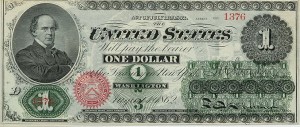
Drastic
is what’s inelastic,
plastic
more than gold’s fantastic.
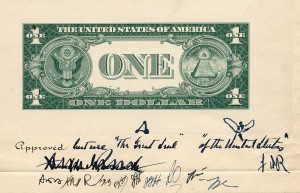
What is copper
to a shopper,
what a penny?
One too many.
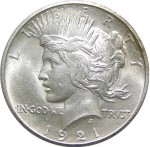
Paper powers
golden showers,
yet isn’t ours!
But a buck round
is square and sound.
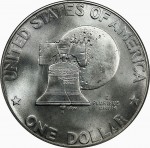
One is proper,
one a whopper.
Coin or paper?
What a caper!

- First $1 bill issued in 1862 as a Legal Tender Note. (Wikipedia)
- President Franklin Roosevelt’s conditional approval of the one-dollar bill’s design in 1935, requiring that the appearance of the sides of the Great Seal be reversed, and together, captioned. (Wikipedia)
- 1921-D Peace Dollar. (Wikipedia)
- 1976-S Type 1 (1975) Eisenhower Dollar with Bicentennial Design. (Wikipedia)
- 2013 Theodore Roosevelt Dollar. (U.S. Mint)
